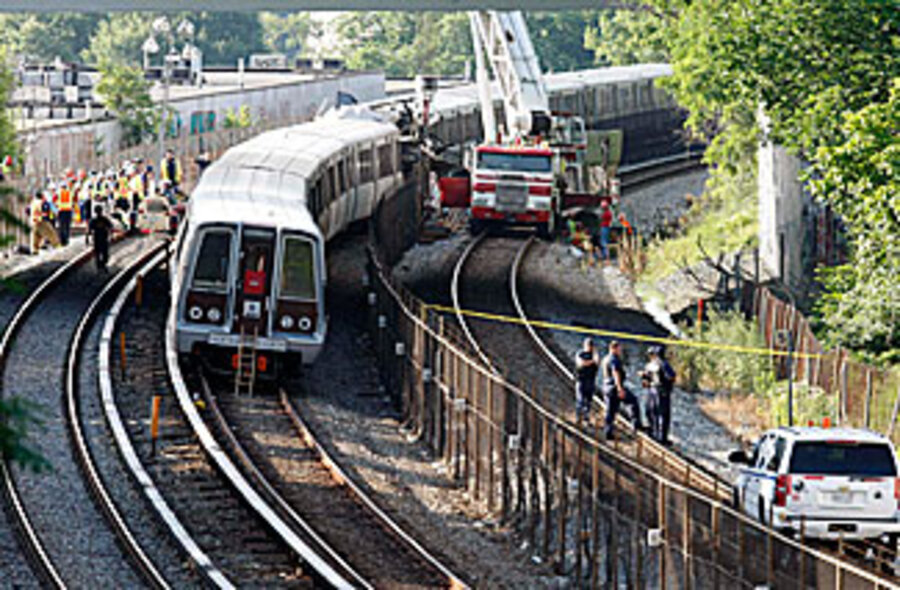D.C. Metro crash highlights underfunding of public transit systems
| Washington
Federal investigators don't yet know why DC Metro Train 112 rounded a bend near Fort Totten station and slammed into Train 214 this week, taking nine lives and injuring 80.
But what is known is that there is a vast and widening gap between what's needed to keep America's public transportation systems fit to ride and what federal, state, and local authorities are investing in them.
More than one-third of assets in the nation's seven largest rail transit agencies, including the Washington Metropolitan Area Transit Authority (WMATA), are in marginal or poor condition, according to an April report by the Federal Transit Administration.
These include public rail systems in New York, Chicago, Boston, New Jersey, San Francisco, Philadelphia, and Washington, D.C. Together, these systems account for more than 3 billion passenger trips a year.
A fix for the backlog would cost $50 billion; maintaining good repair thereafter, another $5.9 billion annually. But the actual level of investment in rehabilitation, replacement, and improvement of existing transit assets in these systems was $5.4 billion in 2006, the latest year reported in the study.
"Americans are riding public transportation at record levels, with 10.7 billion trips taken in 2008, the highest in 52 years," said William Millar, president of the American Public Transportation Association (APTA).
Taking a wider look at the capital needs for all public transportation systems, the American Association of State Highway and Transportation Officials reports that an annual investment of $46 billion is needed to keep up with an expected 2.4 percent annual growth in ridership.
If public transportation use increases to 3.5 percent – a level projected in some models of reducing greenhouse-gas emissions – annual investment in public transportation needs to rise to $59 billion per year.
Yet investment in transit capital from all levels of government amounted to only $13.3 billion in 2006, according to APTA.
Monday's fatal collision in Washington, D.C., got the attention of national leaders. On Tuesday, House majority leader Steny Hoyer of Maryland promised "in the very near future" to introduce a final measure to authorize $3 billion in dedicated federal and local funding for Metro. The funds are restricted to Metro's capital budget, including maintenance and repair.
"The safety of our citizens is our highest priority, and we must take every precaution to make sure this loss of life does not occur again," he said.
"We don't know that [maintenance and repair] was a cause, but certainly it was a consideration," he added.
The measure, first approved last fall, required the approvals of Virginia, Maryland and DC, including to allow federal representation on the Metro board. Hoyer said that final approvals had cleared last week – just before the crash.
In a June 25 letter, Sen. Charles Grassley of Iowa, the ranking Republican on the Senate Finance Committee, urged Mr. Hoyer to make sure that the additional funding is used for safety improvements – not to pay off transit agencies' obligations to foreign corporations, who used their agreements as tax shelters.
One of the reasons Metro officials gave Congress for not phasing out old-model 1000 Series Rohr-built railcars – involved in Monday's fatal accident as well as a 2004 crash at the Woodley Park metro station – is that they were "constrained by tax advantage leases" signed with foreign corporations which require that WMATA keep the 1000 Series cars in service at least until the end of 2014.





